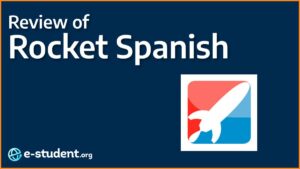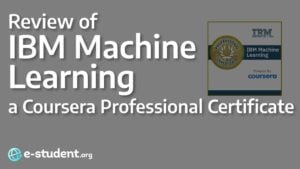Interactive e-learning allows senders to become receivers and vice versa, effectively enabling a two-way communication channel between the parties involved. From the messages sent and received, the teachers and students can make changes to their teaching and learning methods. For this reason, interactive e-learning is considerably more popular than linear, as it allows teachers and students to communicate more freely with each other.
Some educational scientists have categorized types of e-learning according to learning tools, while others have chosen to focus on metrics such as synchronicity and learning content. In this article, we will filter down all these findings into ten easily distinguishable types of e-learning.
These are the ten different types of e-learning:
Types of E-Learning
Before we look at these ten categories, it’s worth considering a reasonably common view among educational scientists who choose to classify e-learning types more simply. They identify two primary types of e-learning: computer-based e-learning and internet-based e-learning. This classification method could be seen as more accurate because it differentiates e-learning from online learning, the two of which are often incorrectly used interchangeably. Some forms of e-learning, such as Computer Managed Learning and Computer Assisted Instruction, are not required to take place online, but they are considered e-learning nonetheless.
1. Computer Managed Learning (CML)
In the case of computer-managed learning (CML), also known as Computer Managed Instruction (CMI), computers are used to manage and assess learning processes. Computer managed learning systems operate through information databases. These databases contain bits of information that the student has to learn, together with several ranking parameters that enable the system to be individualized according to the preferences of each student. As a result of two-way communication between the student and the computer, determinations can be made as to whether the student achieved their learning goals on a satisfactory level. If not, the processes can be repeated until the student has completed their desired learning objectives.
Additionally, educational institutions use computer-managed learning systems for storing and retrieving information which aids in educational management. This could include lecture information, training materials, grades, curriculum information, and enrolment information, among others.
2. Computer Assisted Instruction (CAI)
Computer Assisted Instruction (CAI), also sometimes referred to as computer-assisted learning (CAL), is another type of e-learning that uses computers together with traditional teaching. This could mean interactive software for the students or the kind of training software Patrick Suppes of Stanford University used in 1966. Computer-assisted training methods use a combination of multimedia such as text, graphics, sound, and video to enhance learning. The primary value of CAI is interactivity – it allows students to become active learners instead of passive learners by utilizing various methods, such as quizzes and other computer-assisted teaching and testing mechanisms.
Most schools nowadays, both online and traditional, use different variations of computer-assisted learning to facilitate their students’ development of skills and knowledge.
3. Synchronous Online Learning
Synchronous online learning enables groups of students to participate in a learning activity together at the same time from any place in the world. Real-time synchronous online learning often involves online chats and videoconferencing, as these tools allow training participants and instructors to ask and answer questions instantly while being able to communicate with the other participants.
This kind of community-oriented online learning has been made possible with the rapid development of online learning technologies. Before the invention of computer networks in the 1960s, truly synchronous e-learning was practically impossible to implement. Nowadays, synchronous e-learning is considered highly advantageous as it eliminates many of the common disadvantages of e-learning, such as social isolation and poor teacher-to-student and student-to-student relationships. Synchronous e-learning is currently one of the most popular and quickest-growing types of e-learning.
4. Asynchronous Online Learning
In the case of asynchronous online learning, groups of students study independently at different times and locations from each other without real-time communication taking place. Asynchronous e-learning methods are often considered to be more student-centered than their synchronous counterparts, as they give students more flexibility.
For these reasons, asynchronous e-learning is often preferred by students who do not have flexible schedules because it allows them to utilize self-paced learning. They can set their own timeframes for learning and are not required to learn at specific time intervals with other students.
Before the invention of the PLATO computer system, all e-learning was considered asynchronous, as there were no computer networking methods available. However, nowadays, with the availability of computers and the World Wide Web, deciding between synchronous and asynchronous e-learning becomes more difficult, as each has its pros and cons.
5. Fixed E-Learning
Fixed e-learning is a fancy name for something you are likely already familiar with. “Fixed” in this context means that the content used during the learning process does not change from its original state and all the participating students receive the same information as all the others. The materials are predetermined by the teachers and don’t adapt to the student’s preferences.
This type of learning has been the standard in traditional classrooms for thousands of years, but it’s not ideal in e-learning environments. That is because fixed e-learning does not utilize valuable real-time data from student inputs. Analyzing each student individually through their data and making changes to the materials according to this data leads to better learning outcomes for all students.
6. Adaptive E-Learning
Adaptive e-learning is a new and innovative type of e-learning, making it possible to adapt and redesign learning materials for each learner. Taking several parameters such as student performance, goals, abilities, skills, and characteristics into consideration, adaptive e-learning tools allow education to become more individualized and student-centered than ever before.
We are now at a point where laboratory-based adaptive instructional techniques can be used for the mathematical sequencing of student data. When done correctly, this could mean a new era for educational science. While this type of e-learning can be more difficult to plan and accomplish than traditional teaching methods, its potential value and effectiveness are often understated.
7. Linear E-Learning
When referring to human-computer interaction, linear communication means that information passes from sender to receiver without exception. In the case of e-learning, this becomes a very limiting factor, as it does not allow two-way communication between teachers and students. This type of e-learning does have its place in education, although it’s becoming less relevant with time. Sending training materials to students through television and radio programs is a classic example of linear e-learning.
8. Interactive Online Learning
9. Individual Online Learning
Individual learning in this context refers to the number of students participating in achieving the learning goals rather than the student-centeredness of the material. This type of learning has been the norm in traditional classrooms for thousands of years. When practicing individual learning, the students study the learning materials on their own (individually), and they are expected to meet their learning goals on their own.
This type of learning is not ideal for developing students’ communication skills and teamwork abilities, as it primarily focuses on students learning independently, without communication with other students. Therefore, a more modern approach is necessary to supplant the transmission of skills and abilities.
10. Collaborative Online Learning
Collaborative e-learning is a modern learning method through which multiple students learn and achieve their learning objectives together as a group. Students must work together and practice teamwork to achieve their common learning objectives.
This is done through the formation of effective groups, where each student has to take into account the strengths and weaknesses of each other student. This boosts the communication skills and teamwork abilities of the students. Collaborative e-learning expands on the idea that knowledge is best developed inside a group of individuals where they can interact and learn from each other.
While this type of learning is more often used in traditional classrooms than in online courses, it’s still a good type of e-learning that can be highly effective if done correctly.


